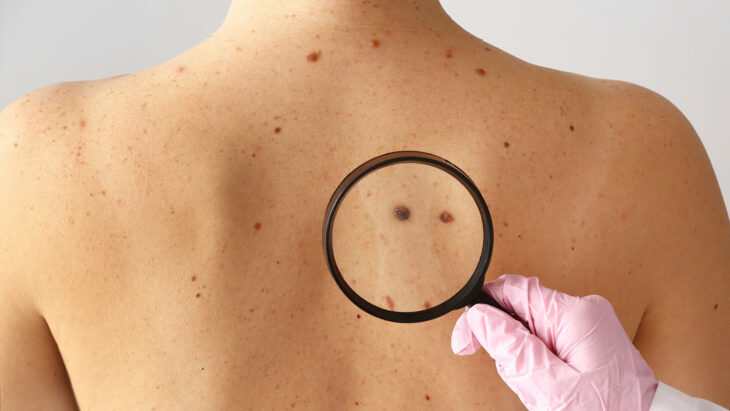May is Skin Cancer Awareness Month — an ideal time to focus on sun safety and get the facts about prevention, diagnosis and treatment. Dr. Dawn Hansen of Dermatology Specialists of Mississippi, alongside her daughter, Lilyth Hansen, offers her expert insights, answers questions and dispels myths about the most common form of cancer in the United States.
Q: What are the most common types of skin cancer you see, and which are the most dangerous?
A: We most commonly see basal cell carcinoma, squamous cell carcinoma and melanoma. Of these, the most dangerous is melanoma. With the newest treatments, healthy survival is more likely than ever before.
Q: How is skin cancer diagnosed?
A: Diagnosis for skin cancer is still done the “old-fashioned” way by performing a thorough skin examination and a biopsy of suspicious skin defects. New technology and treatment tools are making the biggest differences in skin-cancer care.
Q: What are some of the early signs, and what should women be looking out for?
A: Women can perform a proper self-check by routinely examining the skin in a well-lit room. They should look for new or changing spots, including freckles, blemishes and moles. It is especially important to examine areas that are often exposed to the sun, such as the face, neck, arms, hands, legs and scalp.
Follow the ABCDE rule when examining moles:
- Asymmetry – One half doesn’t match the other.
- Border – Edges are irregular, blurry or not well defined.
- Color – Uneven colors or multiple shades in one spot.
- Diameter – Larger than a pencil eraser (about 6 millimeters)
- Evolving – Changes in size, shape, color, or texture
If any of these changes appear, consult a doctor for further evaluation.
Q: How much does family history factor into skin cancer risk?
Gene changes that run in families can account for one out of 10 people diagnosed with melanoma. Family habits may contribute to an increased risk for skin cancer, such as shared outdoor activities, many of which we all enjoy here on the Coast.
Q: What are five of the biggest skin cancer myths?
A: 1. Dark-skinned individuals don’t get skin cancer.
While skin cancer is most often found in lighter-skinned individuals, people of all skin tones can develop skin cancer. Unfortunately, in darker-skinned individuals, it’s often diagnosed at a more advanced stage, leading to higher mortality rates.
2. You need sun exposure to obtain sufficient vitamin D.
Although vitamin D is essential for health, prolonged sun exposure isn’t necessary to maintain adequate levels. Dietary sources can provide sufficient levels of vitamin D.
3. Only sun exposure causes skin cancer.
While ultraviolet radiation is a primary cause, other factors contribute to skin-cancer risk, including tanning beds, age, a weakened immune system and genetic predisposition.
4. Higher SPF sunscreens offer complete protection.
The increase of protection from higher SPF ratings is marginal. No sunscreen can block 100% of UV rays, so it’s important to combine sunscreen with other protective measures, like protective clothing and shade.
5. Sunscreen contains harmful chemicals.
Concerns about harmful chemicals are largely unfounded. The FDA regulates sunscreens to ensure safe and effective use. For individuals concerned about chemical ingredients, mineral-based sunscreens offer a great alternative.
Q: What happens after diagnosis?
A: The patient will be advised to come into the office to discuss the many treatment options. Treatments vary depending on cancer type, location and tolerability to the proposed course. Options may include topical treatments with chemotherapy cream, immune-stimulating ointment or a scraping procedure or freezing for surface cancers.
For cancers that run a bit deeper, cutting it out in the office is recommended. More sensitive areas or larger tumors require a surgery called Mohs to make sure the cancer is cleared and the skin defect is corrected with plastic surgery, done the same day.
For melanoma, surgery is the first step, and the patient may require additional medical treatment under an oncologist’s direction. For basal or squamous carcinomas, if a patient wants to avoid surgery, superficial radiation that does not require numbing, cutting or waiting for a surgical wound to heal may be possible. All these treatment options are offered in our office.
Q: What is the prognosis for the most common types of skin cancer?
A: We anticipate a complete cure of all three of these common skin cancers with treatment if diagnosed early. Very infrequently, a second treatment is needed.
Q: What is the biggest mistake women make when it comes to sun safety, and what message do you have for those who think skin cancer isn’t serious?
A: Women are very knowledgeable and quite vigilant about their health, including the seriousness of skin cancers. The biggest missteps we hear in the office are 1) a misunderstanding of vitamin D requirements and how to obtain them. 2) not wearing daily SPF, even for brief trips outdoors 3) relying on the SPF in makeup to be sufficient for blocking UV rays.
Best practice is to develop a good habit of applying daily facial moisturizer with SPF to the face, neck, upper chest, and hands every day. Don’t forget the lips, and always wear your sunglasses.



